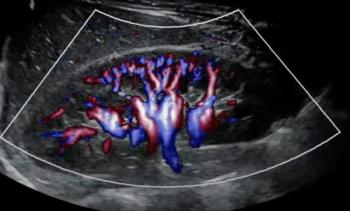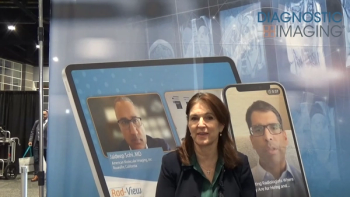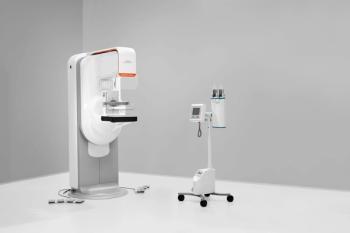
Could handheld ultrasound become our stethoscope?
You know time is marching on when the junior doctors-and even some professors-look young enough to be your offspring. They request examinations using abbreviations that would make you think of an offroad vehicle if only you could read the request form. You know you left your glasses somewhere, but you need your glasses to look for them!
You know time is marching on when the junior doctors-and even some professors-look young enough to be your offspring. They request examinations using abbreviations that would make you think of an offroad vehicle if only you could read the request form. You know you left your glasses somewhere, but you need your glasses to look for them!
I have been feeling dazed and confused ever since November's RSNA meeting. Not unusual, you may think. The effects of jet lag can linger when you reach a certain age. My confusion is not due to the after-effects of intercontinental travel, however. It relates instead to the equipment exhibition.
I have become used to wandering past vendors' booths trying desperately to look sage and knowledgeable while avoiding all conversations. Then I noticed that "Star Trek" had arrived in the form of the Tricorder. Now, this was intriguing. After all, Dr. Leonard "Bones" McCoy figured largely in the aspirations of my generation of doctors.
Ultrasound machines have been getting ever smaller and more portable for several years. The P10 from Siemens looks set to be the first of a series of low-priced handheld machines. Exciting? Yes! But also disconcerting. Laptop-style ultrasound machines are already becoming rarer at medical imaging meetings. Manufacturers clearly do not see radiologists as their target market.
Who are these aimed at then? And what will be the market for a small machine costing just a few thousand euros? No European legislation governs the use of ultrasound. So, now, must we look forward to patients presenting with not only the results of an Internet search of their symptoms, but also a handful of prints from a home ultrasound examination?
I come from the old school of radiologists. We thought that FAST stood for "Fools and Amateurs Shouldn't Tinker" and that FASTER meant adding "Even Remotely." But here is a tool that could be made available to a wide range of clinicians. I could bury my head in the sand and pretend that small ultrasound machines have not been invented. I could stand Canute-like on the shore holding back the tide of "progress." Or I could look at the potential advantages that small, cheap ultrasound may bring to the care of patients around the world.
How many times do we see a patient referred for "ascitic drainage" or "pleural aspiration" when no fluid is present but the patient sports loads of needle marks around the abdomen or chest marking vain attempts to take a sample? We already accept that vascular access should be guided by ultrasound, yet we persist in letting "shifting dullness" guide paracentesis.
This brings me to the conundrum that has been causing my post-RSNA headache. Is it better that my colleagues and I undertake all ultrasound-guided procedures requested at our hospital, given our formal training and experience? Or should the technique be performed by the resident on the ward with a handheld device? This latter option would mean less patient movement around the hospital, less disorientation for the elderly (and I know all about that), and perhaps greater control over hospital-acquired infection. Could this also be a way to extend ultrasound diagnosis economically and effectively to areas of the developing world?
Unless we can legislate against the use of ultrasound by nonradiologists-and I don't see that happening any time soon-then we must acknowledge that wider use of ultrasound will become the norm. In turf war terms, this is Armageddon.
Our response to handheld ultrasound demands that we consider formal education for medical students who might be using these devices. Some institutions-mine included-already use ultrasound as a tool for teaching anatomy. Simple ultrasound techniques may then be performed by all doctors and perhaps other healthcare professionals as well.
Herein lies a further problem. When I supervise young radiologists in ultrasound, we start with simple procedures, progressing to more complicated studies as their confidence and competence develop. How will they learn if there are no simple cases? Alternatively, how can I supervise a generation of medical and other healthcare students?
You can see why I am dazed and confused. It is vital that the dissemination of these machines be considered carefully. If not, we could be spending large sums on small devices for use by those with little or no training, thereby devaluing ultrasound as a diagnostic technique. Or is that what they said about the stethoscope?Oh, and my glasses? They were on my head, as usual!
DR. DUBBINS is a consultant radiologist at Derriford Hospital in Plymouth, U.K.
Newsletter
Stay at the forefront of radiology with the Diagnostic Imaging newsletter, delivering the latest news, clinical insights, and imaging advancements for today’s radiologists.




























